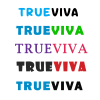The Role of Storytelling in Marketing Your Services
In the competitive world of freelancing, standing out and capturing the attention of potential clients can be a challenge. One of the most effective ways to engage your audience and build lasting connections is through storytelling. By weaving compelling narratives around your services, you can create a strong emotional connection with your audience, making your offerings more memorable and impactful. At FreelancerBridge, we explore how storytelling can elevate your marketing efforts and help you connect with clients on a deeper level.
Long Description
Why Storytelling Matters in Marketing
Storytelling is a powerful tool that has been used for centuries to captivate, inform, and persuade audiences. When applied to marketing, it goes beyond just selling a product or service – it creates an experience that resonates with potential clients. For freelancers, effective storytelling can differentiate you from the competition, humanize your brand, and communicate your value proposition in a way that’s both relatable and memorable.
1. Building Emotional Connections with Clients
✔️ Creating Empathy – By sharing stories about your journey, challenges, and successes, you can foster empathy with your audience. Clients are more likely to trust you when they feel connected to your personal story and understand your motivation.
✔️ Humanizing Your Brand – Storytelling allows you to present your services in a relatable, humanized way. Instead of just listing features, you can demonstrate how your services have made a difference in the lives of previous clients.
✔️ Engagement through Authenticity – Stories rooted in authenticity and real-life experiences engage your audience emotionally, making them more likely to choose your services over others.
2. Crafting a Compelling Narrative Around Your Services
📖 Tell Your Story, Not Just Your Services
Rather than focusing purely on the services you offer, tell the story of how you got started as a freelancer, the obstacles you've overcome, and the skills you've honed. Clients appreciate knowing who they’re working with, and a good story will create trust and intrigue.
📈 Showcase Client Success Stories
Including client testimonials or case studies that tell a success story can be incredibly powerful. Share the challenges your client faced, how you solved them, and the positive outcome they achieved through your services. These real-world examples demonstrate your value and give potential clients confidence in your abilities.
3. How Storytelling Improves Client Retention
✔️ Creating a Connection – When you continuously engage clients with stories about your process, growth, and results, you create a deeper connection that fosters long-term relationships.
✔️ Memorable Marketing – Clients will remember the stories you tell far longer than they will remember a list of services. Your ability to create a narrative around your freelance brand makes you more memorable in a crowded market.
✔️ Turning Clients into Advocates – A compelling story can turn clients into passionate advocates who not only return for repeat business but also refer you to others.
4. Storytelling Through Different Marketing Channels
🌐 Website and Portfolio
Your portfolio is more than just a collection of projects – it’s a space to tell your story. Use your website to highlight your journey, share your personal experiences, and showcase the impact you’ve had on clients. Make sure your bio includes key moments from your career and how those experiences led you to offer the services you provide today.
📱 Social Media
Social media is an excellent platform for sharing snippets of your story. Whether it's a behind-the-scenes look at your work process, a post about how you solved a client’s problem, or a short video explaining your story, social media allows you to connect with potential clients on a personal level. Storytelling via social media helps create consistency in your brand’s voice and identity.
✉️ Email Marketing
Use email campaigns to tell stories about recent projects, client successes, or even personal milestones in your freelance career. This type of storytelling keeps your audience engaged and interested in your services, ensuring they think of you when they need assistance.
5. How to Structure Your Freelance Marketing Story
✔️ The Beginning – Share your background and what led you to become a freelancer. This gives context to your story and builds a personal connection with your audience.
✔️ The Challenge – Discuss the challenges you've faced as a freelancer and how you've overcome them. This demonstrates your resilience and expertise.
✔️ The Resolution – Conclude with how your services can solve the challenges that potential clients face. This brings your story full circle and shows the practical benefits of working with you.
6. Best Practices for Effective Storytelling
✔️ Keep It Authentic – Your audience will connect with you more if your story is genuine and real. Don’t be afraid to show vulnerability and share the lessons you’ve learned.
✔️ Be Relatable – Speak to your audience’s pain points and aspirations. Tailor your stories to reflect the challenges and goals that resonate with potential clients.
✔️ Show, Don’t Just Tell – Whenever possible, show evidence of your story. Use visuals, case studies, and testimonials to bring your narrative to life and make it more impactful.
7. Measuring the Impact of Storytelling in Marketing
✔️ Increased Client Engagement – Keep track of how much time potential clients spend on your website, the engagement on your social media posts, and the response to your email campaigns. If storytelling is working, you should see higher engagement rates.
✔️ Improved Conversion Rates – By building a connection through storytelling, your audience is more likely to convert into paying clients. Monitor how your story influences decisions and sales over time.


 by Emily
by Emily




